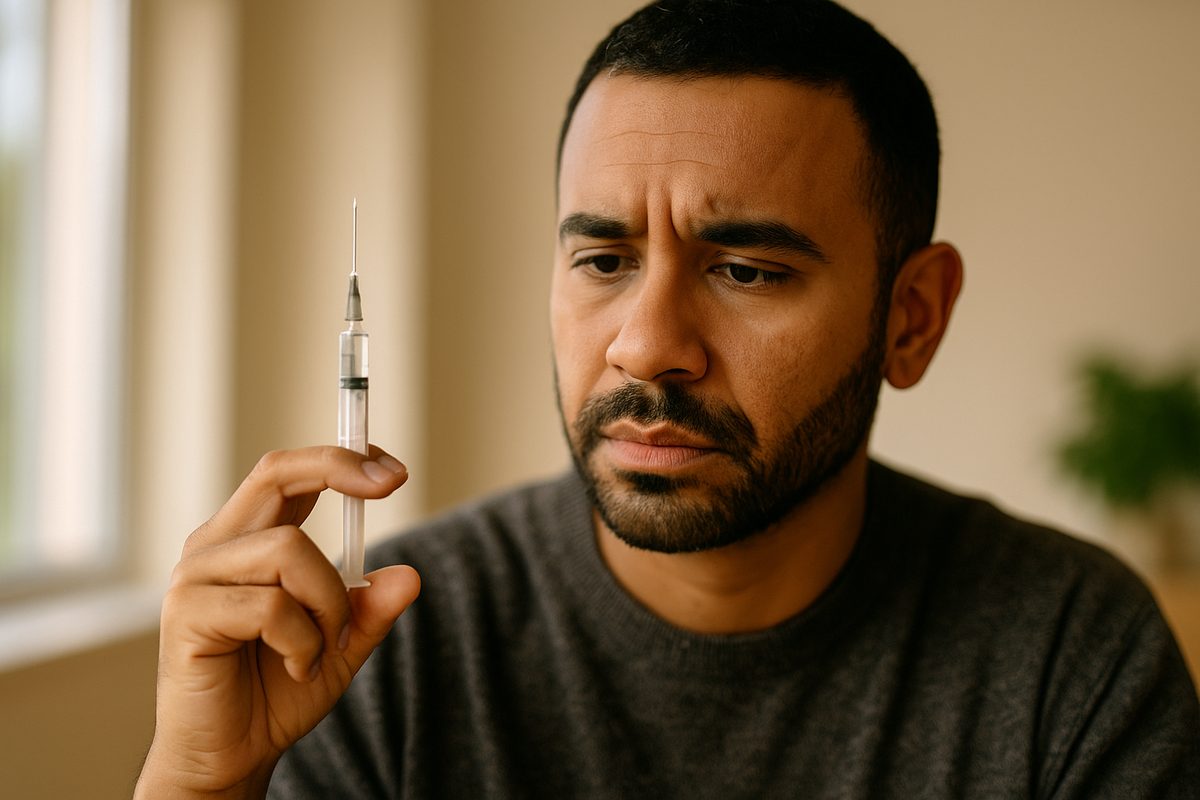

Shooting fentanyl is one of the deadliest ways to use any drug. The dangers of injecting fentanyl are extreme because the full dose hits the brain in seconds, with no warning and no way to take it back. Just 2 milligrams—an amount that can fit on a pencil tip—may be lethal. In recent years, synthetic opioids like fentanyl have driven the majority of overdose deaths in the U.S., claiming tens of thousands of lives in a single year. That’s not a headline. That’s families, every day.
As Johann Hari said,
“The opposite of addiction is not sobriety, it’s connection.”
Connection to real help can save a life. If you’re here for answers, you’re already taking the first step.
Navigating This Guide
This hub page serves as the entry point for deeper exploration. Use the links below to dive into specific areas of Fentanyl addiction:
Why Shooting Fentanyl Is So Dangerous
Fentanyl is a synthetic opioid 50–100 times stronger than morphine. When injected, it bypasses the body’s natural filters and rushes straight into the bloodstream and brain. That speed creates an intense high—and a razor-thin margin for error. A tiny misjudgment in dose can stop breathing in moments.
Illicit fentanyl is often mixed into powders and counterfeit pills. People who think they’re using heroin, oxycodone, or even cocaine may actually be injecting fentanyl or a fentanyl-laced mix. Dose and purity change from bag to bag, so what seemed “safe” yesterday can be fatal today.
Tolerance is another hidden trap. After a break—detox, jail, treatment, or even a short period of not using—tolerance drops fast. Returning to a “usual” amount can trigger a deadly overdose.
Finally, mixing substances multiplies risk. Benzodiazepines, alcohol, sleep meds, and other depressants stack sedation and suppress breathing. “Speedballing” with stimulants (cocaine or meth) adds heart strain and chaos to an already dangerous situation.
Dangers of Injecting Fentanyl: Health Risks You Can’t See
The dangers of injecting fentanyl go beyond overdose. Repeated injections damage the body from the inside out:
- Collapsed veins and skin infections. Missed shots, contaminated gear, and irritant additives lead to abscesses, cellulitis, and scarring.
- Endocarditis (heart infection). Bacteria introduced into the bloodstream can infect heart valves and become life-threatening without surgery.
- HIV and hepatitis C. Sharing syringes, cookers, cottons, or water spreads bloodborne diseases; even “just once” is enough for infection.
- Lung and kidney stress. Inactive fillers and contaminants strain organs not designed to filter them.
- Wound complications and sepsis. Untreated infections can spread quickly, leading to hospitalization or death.
Short-term signs that someone may be in danger after injecting include pinpoint pupils, slow or shallow breathing, gurgling sounds, limp body, cold or clammy skin, and blue lips or fingertips. These are medical emergencies, not “nodding off.”
What to Do in an Overdose & How Recovery Starts
Seconds matter. If you suspect an overdose:
- Call 911 immediately and say “suspected opioid overdose.”
- Give naloxone (Narcan) if you have it. If there’s no response in 2–3 minutes, give another dose.
- Support breathing with rescue breaths if you’re trained. Oxygen saves lives.
- Stay with the person until help arrives. Do not let them “sleep it off.”
Surviving today is the first step. The next step is treatment that addresses both the body and the mind. Effective care often includes:
- Medical detox to manage withdrawal safely.
- Medication-assisted treatment (MAT) such as buprenorphine or methadone to reduce cravings and stabilize brain chemistry.
- Therapy (CBT, motivational interviewing, trauma-informed care) to work through anxiety, depression, grief, or PTSD.
- Infectious-disease screening and wound care to treat complications of injection.
- Peer support and family involvement to rebuild connection and accountability.
- Aftercare planning (support groups, outpatient therapy, housing, employment help) to lower relapse risk.
True Stories of Addiction (Video) & Get Help Now
If you or someone you love is shooting fentanyl, today can be the day you choose help. Don’t wait for the next scare.
Search our treatment directory to find compassionate, evidence-based care near you, or call our hotline at (866) 578-7471 for confidential support right now. Connection saves lives. Hope starts here.








